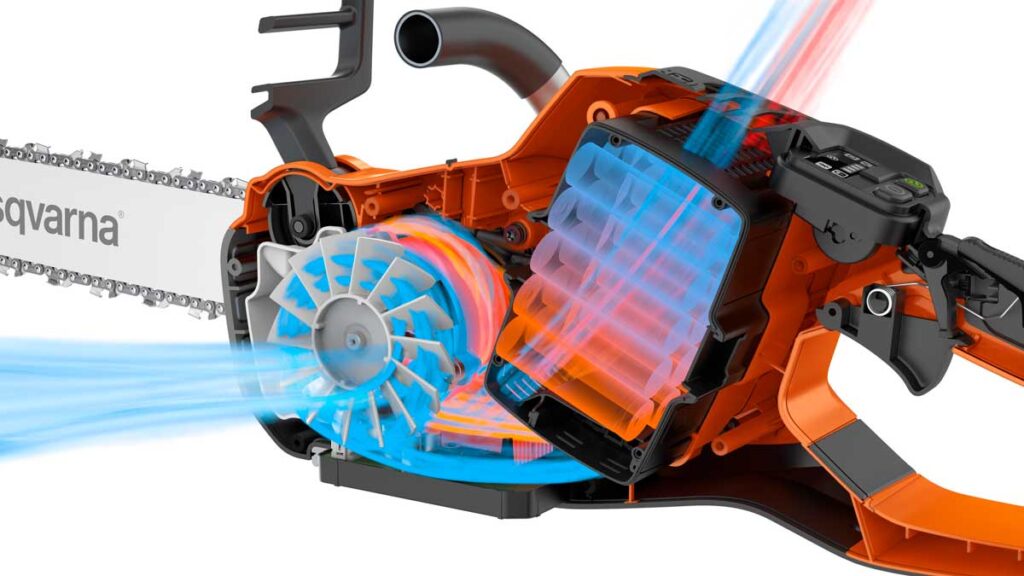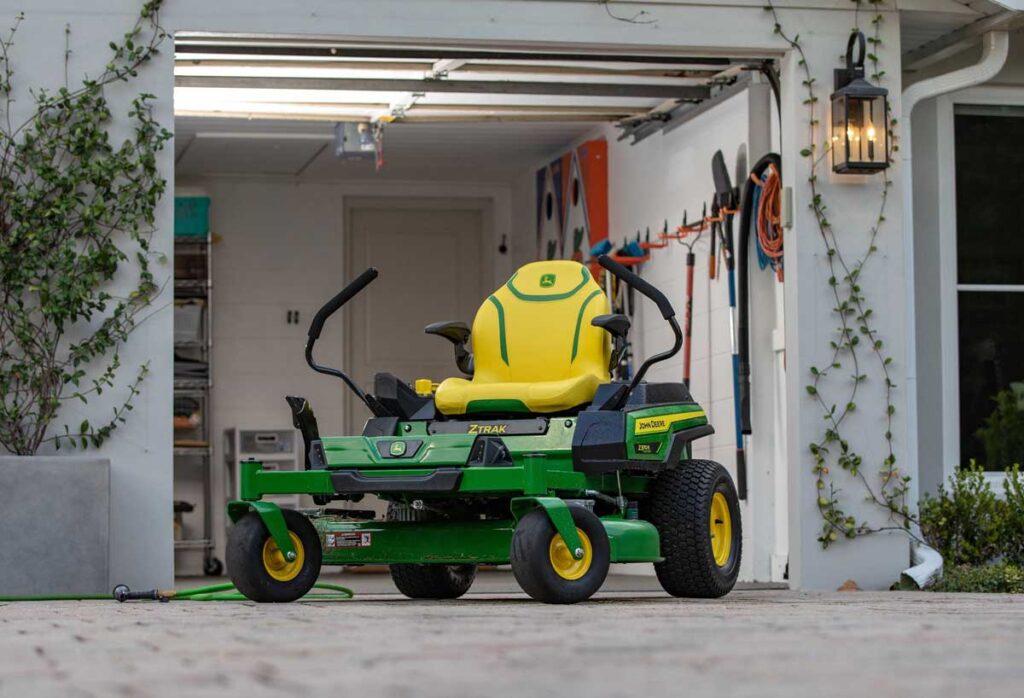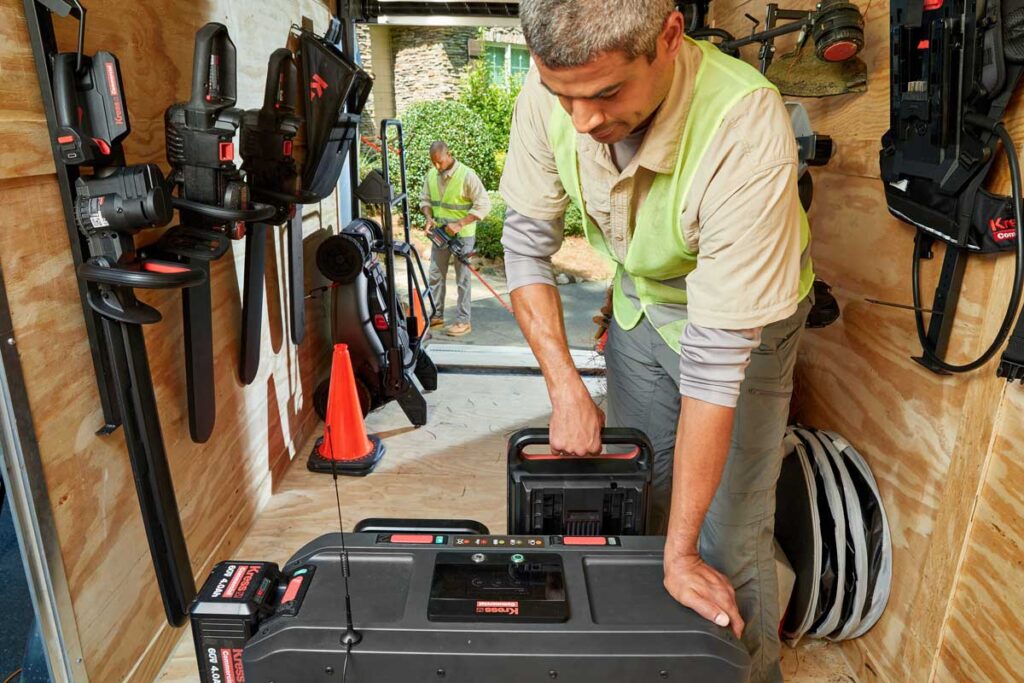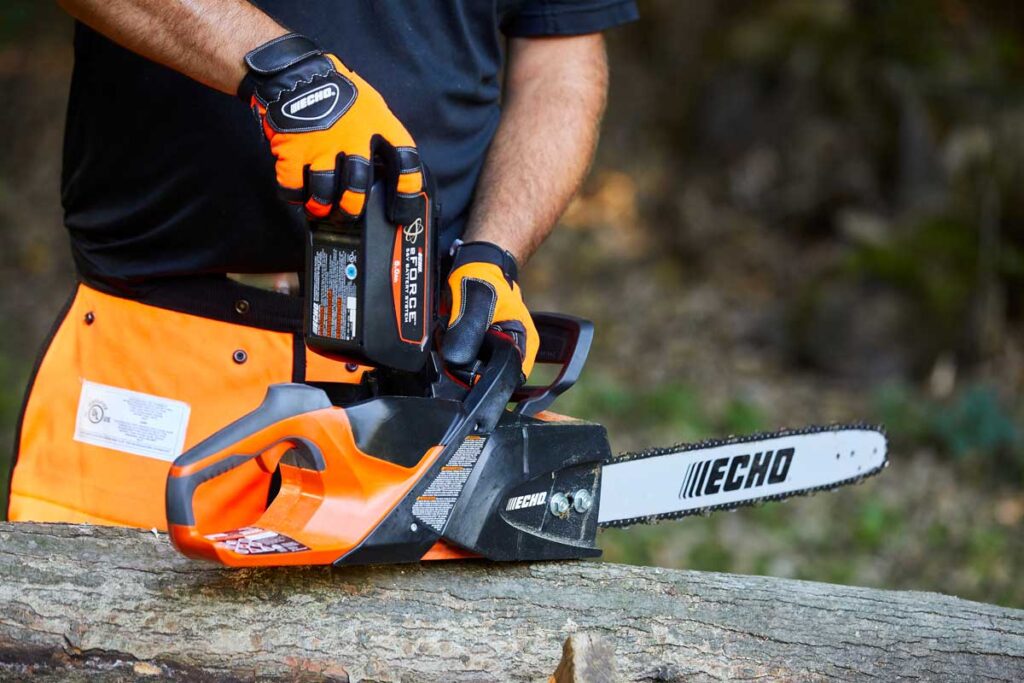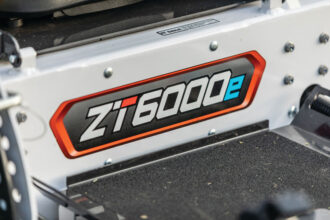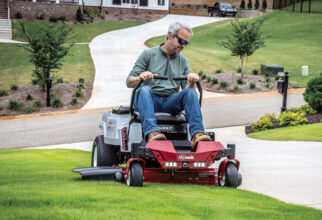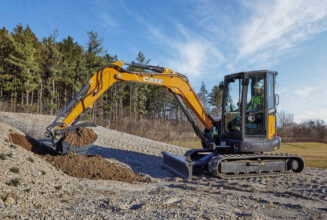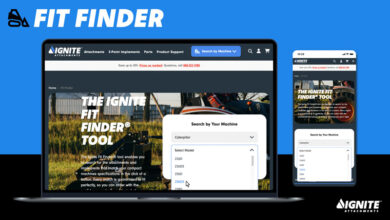Power Shift – Electrification of OPE
When the Ram division of Stellantis (the parent company of Dodge trucks) ran a 60-sec. video and Super Bowl commercial, it got a lot of attention for the provocative “premature electrification” theme. With clever writing that mocked an often-spoofed medical condition, Ram tried to address the issue so many fear about batteries – battery run time. Ram’s actual goal was to get truck buyers to wait several months for its electric trucks instead of buying a Ford Lightning F-150.
Ram, thanks for the cute video and headline. However, while battery life is a serious consideration in the electric equipment purchase process, it’s one of many, and it might not even be the most important one.
Is Electric Right For You?
I researched this topic to learn the current state of electrification in the outdoor power equipment industry. What are manufacturers doing? Why are they doing it? What do dealers think of electrification? I spoke with a few dozen people and ran a short survey. In the process, I uncovered a story. Two actually, one short and one long.
The short story: The internal combustion engines we’ve enjoyed for 150 years are losing marketshare because consumers want options and manufacturers are creating those options.
The long story: It includes noise reduction and ease of use and motor efficiency, sustainability, regulations and uncertainty, a lot of uncertainty.
Accepted
California gets the blame – or the credit, depending on your politics – for kickstarting the OPE electrification push. But it started well before the Left Coast giant proposed its ban on the sale of new gas-powered mowers and blowers. Electrification started when NASA contracted with tool maker Black & Decker to create a battery-powered drill astronauts could use in space. That was 1961. Today’s performance of battery-powered drills and drivers has proven to the most skeptical construction crews and DIYers that lithium-ion (li-ion) can do the job.
Lawnmowers and drills are different animals, but the sales numbers for battery-powered equipment are trending up. Industry research group Traqline reports that sales of non-gas-powered outdoor equipment have grown significantly year-over-year for the past decade. “For both unit sales and dollar shares, gas-powered OPE has been losing share slowly but steadily since 2013, leading to significant year-over-year losses. Currently, electric and battery-powered outdoor power equipment make up 64 percent of the total OPE market in terms of unit sales,” the company reports on its website.
Sustainable Reality
Tool and equipment manufacturers recognize this reality. And so does giant retailer Home Depot, which announced it is aiming, by the end of 2028, for 85 percent of outdoor power equipment sales to be generated by items that run on rechargeable battery technology instead of gas. Big orange is focused on push lawn mowers and handheld outdoor equipment like leaf blowers and trimmers. Ron Jarvis, Home Depot’s chief sustainability officer, said in a statement, “By working with our suppliers to bring innovative and sustainable products to every aisle of our store, we can help our customers create more sustainable homes and workplaces.”
Regulations, whether by state governments or localities, will continue to impact the power equipment industry. But the larger evolutionary force is coming from manufacturers because buyers are asking. Home Depot, not known to be a politically liberal corporation, recognizes consumer interests and it acts to meet those. Much of Home Depot’s sales volume feeds the residential market with handheld tools like leaf blowers and trimmers.
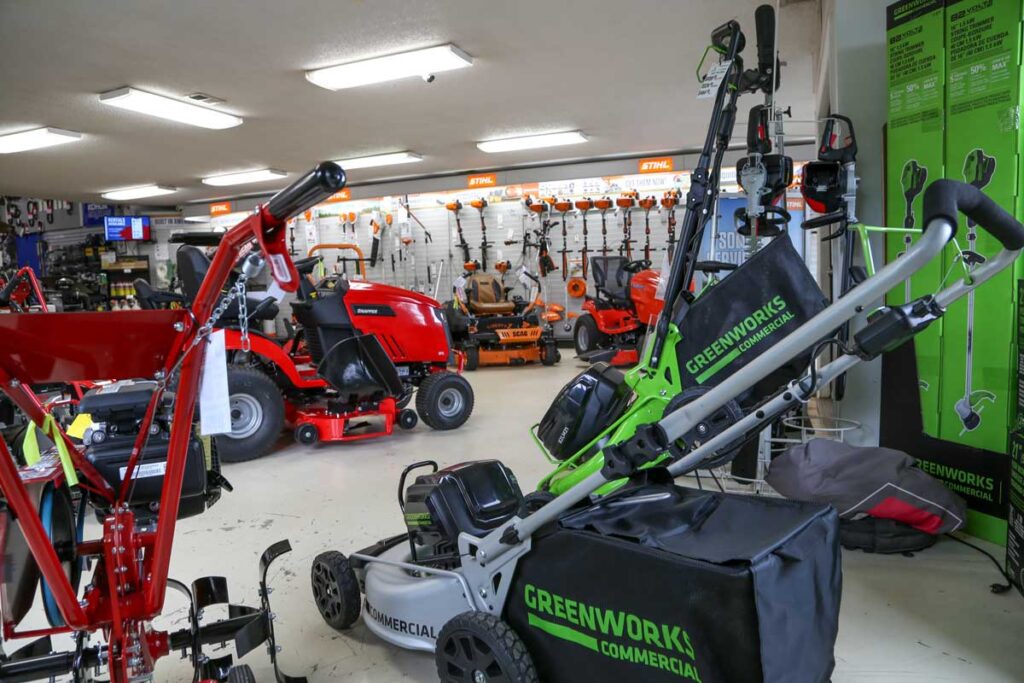
While mass-market retailers in many areas (Home Depot, Lowe’s, and others) do compete with traditional OPE dealers, the independent retailer and the manufacturer product mix are different. I spoke with several OPE dealers and manufacturers to learn how and why electrification is changing the business.
Powerful Expectations
I surveyed a few dozen OPE dealers to begin my research. Nearly 70 percent of the dealers I surveyed indicated their sales of electric products are increasing. And nearly 25 percent say that both residential and commercial users are buying battery-powered products. “We see more and more landscapers looking at battery-powered tools,” said Bob Rodgers, of Rodgers & Sons in Cherry Creek, N.Y., “and many trucks have inverters so they can charge batteries on the job. And they trim for maybe 15 minutes or so.” Still, he adds, “Nobody is asking about electric equipment bigger than handheld. People here still like their gas.”
While consumers are making the shift to li-ion power tools and equipment, commercial buyers are slower to adapt. Whether it’s because they “like their gas” or for another reason, there is a question of expectations.
“On the landscaper side,” said Christin Wam, senior director of marketing for Briggs & Stratton’s Turf & Consumer Products group, “they are looking for something that will last for the full day. But while many of them consider a ‘full day’ to be eight hours, they’re not cutting for eight hours, but that’s their expectation.”
Historical Shift
Briggs & Stratton itself is an interesting study of the electrification evolution. In its 100-plus year history, B&S has produced more than 200 million gas engines. And the Milwaukee manufacturer calls itself “the world’s largest small engine producer.” The first engine I ever pulled to life was a Briggs & Stratton – that might be true for you too. Today, the company is evolving to become a “provider of power.” The company’s Vanguard commercial power division markets li-ion battery packs and V-Twin gas engines. It also boasts about being “a leading designer, manufacturer and marketer of lithium-ion battery … products.” Wam said that the company ran a marketing campaign years ago to fight in favor of gasoline, and the comments it received from consumers were not good. “Many people told us we needed to evolve,” she said. Had it not done so, it might have become the modern-day Kodak, a company famous for eschewing the digital camera biz.
At the opposite end of the evolutionary spectrum from Briggs & Stratton, Kress promotes “The death of gas” on its website. “Welcome to the post-gas era” announces Kress with a web headline over its battery-charging system. Kress has been marketing battery-powered tools – and only battery-powered tools – to the North American market for one year, though its roots are deeper in Europe. With a focus on equipment powered by fast-charging batteries for commercial users, Kress is trying to reach landscapers and OPE pros to address their expectations of electric tools.
Performance is Money
“The first thing landscapers ask us for,” said John Sloan, director of sales for Positec’s Kress brand, “is a substitute for gas equipment. Most companies have tried battery tools, and they want to know about battery run time. We could engineer a battery to run for two hours, but it would be too heavy.”
One OPE dealer I surveyed added this comment to his response: “I will be impressed when an F16 jet could perform with battery on par or better than today’s jet.” While innovative aviators are developing and testing battery-powered jets, I doubt they will impress this anti-battery dealer anytime soon.
When comparing batteries to gasoline (or jet fuel), I need to cover the topics of energy density and motor efficiency, even if briefly. I’ll start by paraphrasing an ancient question: “If an oxcart is carrying a load of grain to market, how far can it go before the oxen eat up all the cargo (i.e., their fuel)?” All vehicles that carry their own fuel face this problem. The grain as fuel has low energy density, and the ox as a motor has low efficiency, but they used what they had.
Fast forward and look at gasoline; it has a significantly higher energy density than a li-ion battery. Some of that difference is offset by the high efficiency of electric motors in converting stored energy into motion. Internal combustion engines are inefficient; they’re unable to use all of gasoline’s inherent power. That inefficiency, plus the heat, noise, maintenance, and exhaust, is why we’re talking about batteries today (and hydrogen tomorrow?).
Performance Equivalence
To be clear, none of the manufacturers I spoke with said the performance equivalence is there – battery to gas. “The biggest limiting factor right now,” said John Powers, director of product management for ECHO, “is energy density. Power equipment is a hard challenge to solve.” With a car, he says, you can install more batteries because weight is less of an issue. With most handheld equipment, like trimmers and blowers, you can fit enough energy in a tool and it’s easy to access chargers when needed. But he says larger tools like backpack blowers and mowers present a bigger challenge.
What the manufacturers present is a revision to the power question. “We try to turn that run-time question,” said Sloan from Kress, “into a productivity question. What do you need to get done?”
Productivity, not pure performance, is a key development factor. “The challenge is to give pro users the same productivity,” said Powers from ECHO. “The work they do is established. They look at the equipment on their truck, and they want battery versions of those tools, because those tools get the jobs done.”
The productivity comparison reveals other differences between gas and battery-powered equipment. When discussing the Bobcat T7x electric compact track loader, Joel Honeyman, VP of Global Innovation for Doosan Bobcat, says, “Remember that there is no idle. Much of a loader’s use is at idle. So battery power works well for productive work time.”
Plus, with far less noise and zero emissions, battery-powered tools allow landscapers and others to work near hospitals, schools, and residences where noise and emissions are unwelcome. “Noise reduction is a major buying factor,” said Kress’s Sloan. “A lot of municipalities are demanding this.”
Less Noise, More Ease, Improved Image
“In the past, say until about two years ago, most of our electric tools were bought by customers who wanted to reduce the noise, like a horse farm,” said Dave Little, whose Little’s Equipment operation includes five retail stores in southeast Pennsylvania. “We’ve sold even more this year, people switching over from gas to electric, for overall ease and less mess. We had a slower start with Stihl, but now the customers are buying in and our salespeople have bought in. For a residential buyer, we tell people, unless you really want gas, the electric is so much easier.”
“Ease of use is a lot of it,” said Greg Paul of Paul’s Lawn & Garden in Massillon, Ohio. “No pull starting, that’s big for some older customers. Quiet is a benefit for some people. No worrying about old gas. We’re adding Kress products to our store, and they offer an extremely fast recharge system. That adds even more convenience.”
“Noise is a big one,” said Powers from ECHO. “I hear about this in Florida for sure, and other places, especially hot areas where workers like to start early in the morning and noise can be a problem. With gas-powered trimmers and blowers, right next to a building, noise is an issue.”
The battery industry does have issues to work on, including battery recycling. “Our OEMs need to help us figure out how to recycle batteries,” said Paul, the Ohio dealer. “I have shelves full of old batteries. It’s not a huge percentage but it’s a problem over time. This is the biggest question I have right now.” OPEI, the industry association, has a Battery and Electric Products Committee that is working, in part, on issues like battery recycling. And manufacturers are working on the recycling issue, as well as current and potential regulatory challenges facing product development.
That doesn’t stop the myriad forces driving the shift to electrification. Home Depot is not the only corporation aware of the growing consumer demand for “sustainability.”
A Balance
“Our commercial customers including landscapers,” said Jack Easterly, Global Segment Manager for Husqvarna, “get more frequent requests from their customers for sustainable work teams and products. We are a 330-year-old company focused on innovation. That includes helping to lead this new future of sustainable landscaping.”
With customers measuring everything from productivity to noise levels to cost and more, the manufacturers face as tough a challenge as ever, to build equipment that performs and sells and meets modern environmental criteria. “From extensive market research, the primary demand from the market for both professional and consumer users is battery technology that meets or exceeds the performance of gas, the runtime to get the job done, and durability to last as long or longer than gas comparable units. STIHL is using these market learnings to drive innovation that meets these primary users’ needs,” said Paul Beblowski, Product Manager, Professional Battery, STIHL.
In the meantime, the OEMs also know – and I’ll give Easterly from Husqvarna the final word – “Battery is an evolution, not a revolution. And internal combustion engines still have a place.”

